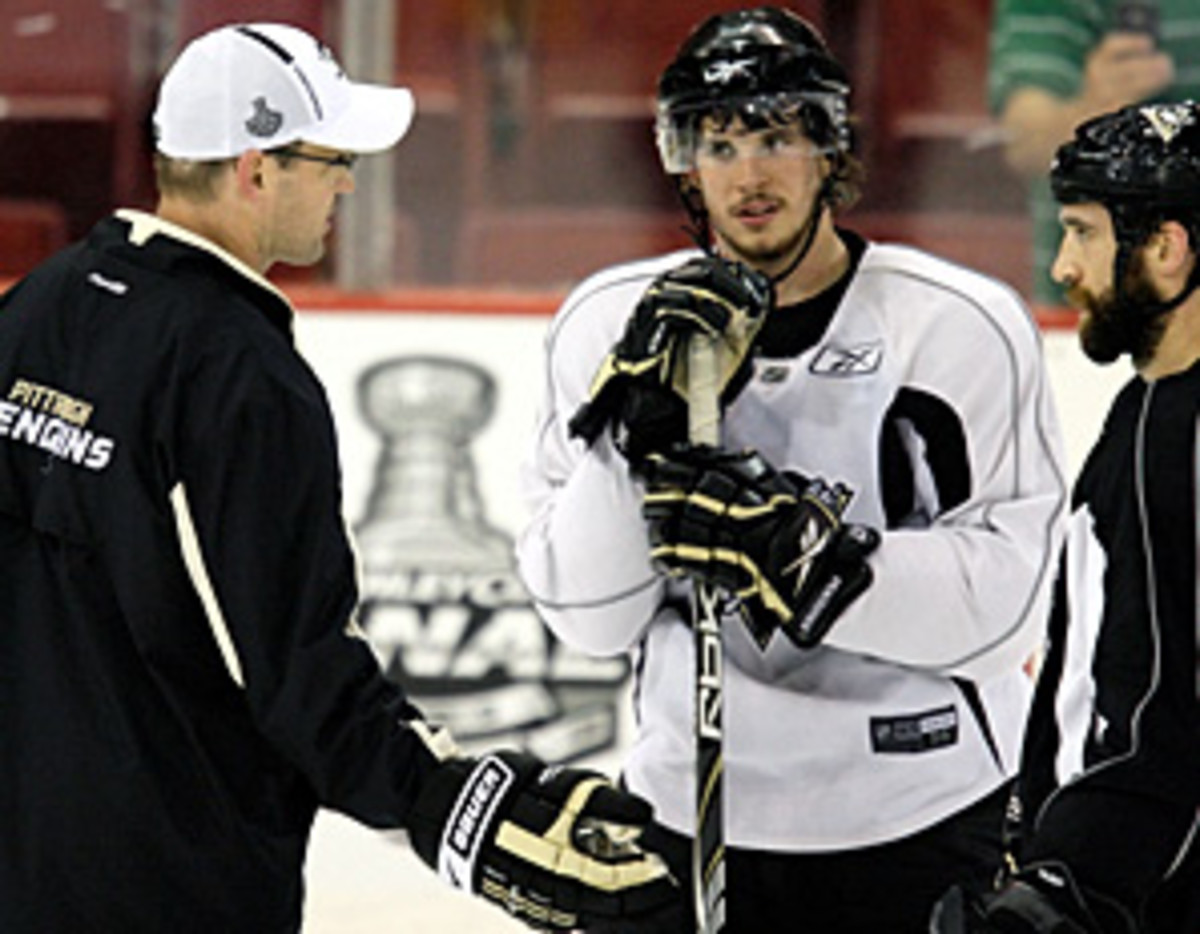
Role players like Max Talbot are crucial to a team's success
I sat in on a presentation this past weekend in Nashville by Tampa Bay Lightning Assistant General Manager Claude Loiselle that was very interesting. He was part of a program that addresses the entire Thunder Hockey AAA organization: coaches, parents and players aged 11-18 on teams comprised of some of the best youth in the southeast region.
Loiselle's message was crucial -- especially for the older players -- in that he focused on the importance of everyone's contribution to the success of a hockey team. Most of the players in his audience have always been the best on their respective teams. The reality is that as they progress and play in higher-level leagues, their roles may change. That, however, won't automatically diminish their value.
Loiselle took the rosters of the 2009 Stanley Cup Final participants, the Detroit Red Wings and the Pittsburgh Penguins, and cited 19 players who were drafted in the fifth round or lower, or not even drafted at all. He provided pro scouting reports on several as a way to drive home his point that winning depends on much more than star power. Limitations in certain skills do not preclude a player from creating a role on a winning team and, as such, being a valuable piece of the whole. Every last member of a roster counts.
Max Talbot proved the perfect example. On a team with Sidney Crosby, Evgeni Malkin and Jordan Staal, it was Talbot who scored both goals for Pittsburgh in their decisive Game 7 win over Detroit. Here was a guy who entered the QMJHL as a top pick, yet he spent five years in junior hockey and wasn't drafted until the eighth round in 2002 (234th overall). Signed by the Penguins, Talbot has never scored more than 13 goals in any pro season, including two full campaigns in the AHL. What he has done, though, is become a tremendous penalty-killer, dependable checker and integral part of the Penguins' championship mix.
And Talbot has a pedigree of big game performances beyond his Game 7 heroics this past spring. He was the QMJHL playoff MVP in successive years (2003 and 2004). He scored the game-winner in the 2008 Eastern Conference Final and a last-minute tying goal against the Red Wings in Game 5 of the 2008 Cup final. None were bigger than his Game 7 goals, but Talbot's history of coming through in big moments was already there. Now he has cemented his reputation as a clutch performing "glue guy" -- not the star, but a role player taking a star turn.
Loiselle admitted that you can't win championships without talent, but he offered up another view of star players by saying, "Sidney Crosby is a role player, too. His role is to score goals." That's what his primary function is on the ice for the Penguins -- to generate offense. That doesn't mean that Crosby can cut corners when he isn't putting the puck in the net. He has responsibilities without the puck and he doesn't shirk those duties, either. That's why the Penguins are champs. Everyone committed themselves to the team's success and then contributed to it.
As teams head to training camp this weekend, Loiselle's point will be made 30 times in NHL locker rooms and off-ice meetings everywhere. And even if the kids in attendance didn't grasp all the nuances of his message, those that continue to put in the time and effort will come to understand the importance of the collective when it comes to winning hockey. Roles change over time, yet no role is inconsequential.
Just ask Max Talbot and the Pittsburgh Penguins.





